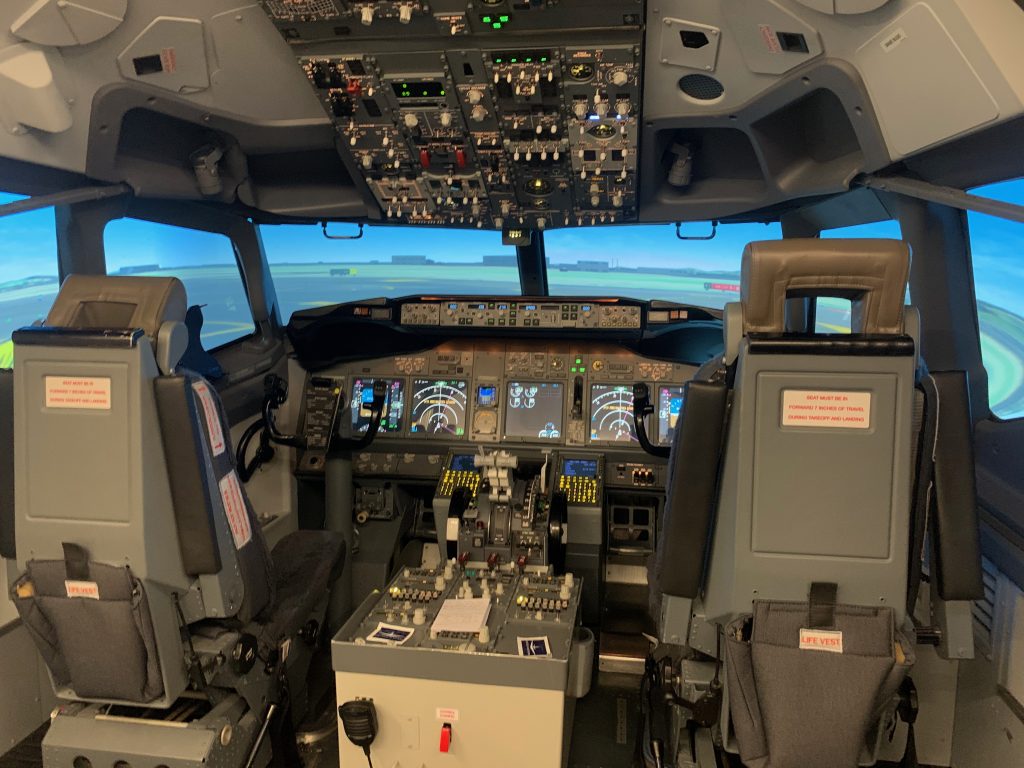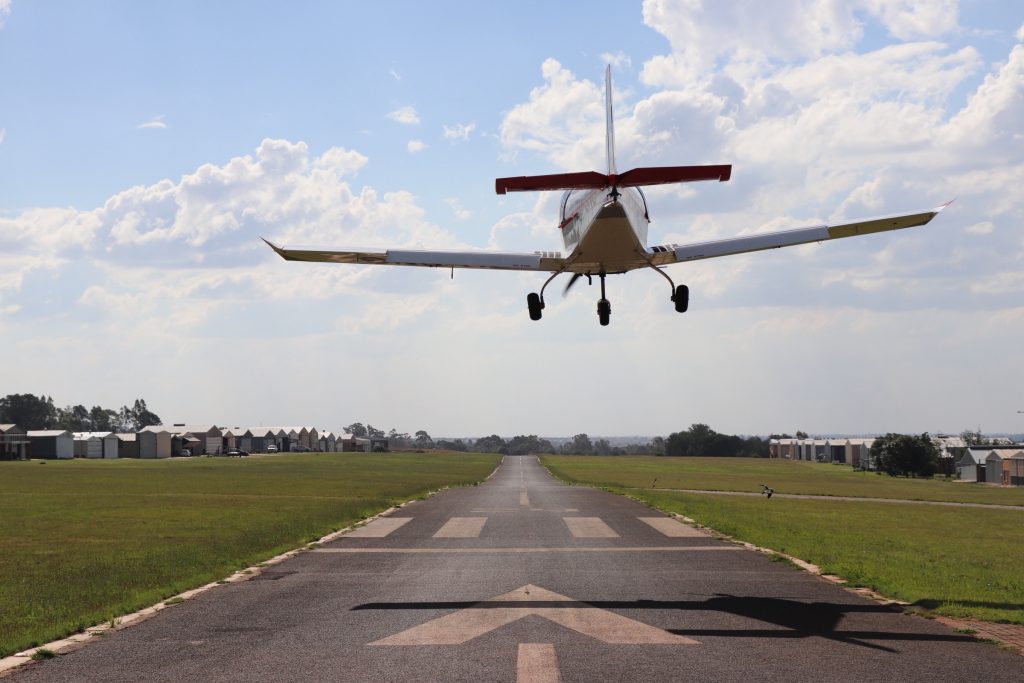What you do with the hours between getting your PPL and starting the CPL can make your pilot resume stand out from the competition...
…but if you don’t make the most of your Hour Building then your Pilot Resume won’t stand out from the crowd. You don’t want to look like just another pilot with some fairly vanilla flight experience. I believe it’s crucial to maximise the opportunity that Hour Building gives you to make you stand out when applying for jobs.
Hour Building.... Why?!
So far in your pilot training you’ve done your Private Pilot License, and have got a minimum of 45 hours flight time. You might (and probably do) have more than the minimum hours, but you certainly won’t have much experience.
The UK CAA state that in order to be eligible to begin a Commercial Pilot License (CPL) training course, a student must have completed a minimum of 150 flight time.
Then once the CPL course is completed, a student must have the following before they can take a CPL skills test:
| Pilot In Command (PIC) | 100 hours as PIC, of which 20 hours of cross-country flight as PIC, which shall include a VFR cross-country flight of at least 540km (300 NM), in the course of which full stop landings at two aerodromes different from the aerodrome of departure must be made. |
| Night | 5 hours of flight time must be completed at night, comprising 3 hours of dual instruction which must include at least 1 hour of cross-country navigation and 5 solo take-offs and 5 solo full stop landings |
| Instrument | 10 hours of instrument flight instruction, of which up to 5 hours may be instrument ground time in an FNPT I, or FNPT II, or FFS. If you hold a course completion certificate for the Basic Instrument Flight Module you will be credited with up to 10 hours towards the required instrument instruction time. Hours done in a BITD shall not be credited. |
(the above is lifted from the UK CAA website here)
Flight schools will set their minimum entry requirements such that students will just hit the above criteria at the end of their CPL MEIR course. Since each school structures their courses slightly differently, they’ll each have slightly different basic entry requirements. BUT, broadly, you can expect to need the following before starting a CPL MEIR course:
- At least 150 hours flight time, of which at least 100 hours is PIC and 20 hours is cross country
- A completed VFR cross country flight of min 300nm with stops at two different aerodromes (as outlined above)
The purpose of Hour Building is to build the experience required to enter a CPL course.
A Little Context
For context, I was a modular student and I got my PPL in the UK, then completed my ATPLs through a full time ground school. I took my last ATPL exam in March 2020, and got my results on the Friday before the UK’s first lockdown started on the subsequent Monday. One of my ATPL class mates (Andrew) and I had concocted a plan that was initially going to take us to fly a Cessna 172 around the USA, and we had expected to do so from May or June 2020. Covid-19 and travel restrictions put an end to that plan. Instead, as the first lockdown eased Andrew suggested we could explore South Africa. So – long story short – that’s what we did.
Andrew and I travelled to South Africa in November 2020 and spent two months flying around the country in ZU-SNG, a Sling 2T that we rented directly from Sling, the aircraft’s manufacturer. We had a truly phenomenal time, and were able to gain a much richer Hour Building experience than if we had stayed in the UK (in my opinion). I’ll explain more about the specifics of that later – this post is really to try to expand the horizon of your ideas, not convince you that you should travel overseas.
Unglamorous and Boring, or a World of Opportunity?
If you’re a modular student then there is a real opportunity to be creative with your Hour Building plans. It’s harder for students on an integrated course, as more often than not the Hour Building component is planned to take a certain amount of time and be in a particular location. But no matter whether you’re a modular or an integrated student, you will have the chance to do some really interesting things while building your hours if you’re prepared to be creative and put the work in.
Since Hour Building doesn’t have a completion certificate at the end of it, it’s often seen as a necessary frustration (and expense) to fill the gap between finishing the PPL and being able to start the CPL.
Opinion time: you must think of your hour building as a key part of your training, not just something you've got to get done for the sake of doing it. And realise that what you do here could be the difference between getting an interview for a job, or being passed over for someone else.
The Basic Problem
If you’re a modular student who completed your PPL at a local flying club or flight school, then the obvious thing to do will be to rent an aircraft from the same place to build your hours. This is a sensible thing to do in as much as you likely already know the aircraft, already know the school and already know the geography and airspace. There is nothing inherently wrong with this plan – and of course you will likely fly much further away from the base airfield than you were able to whilst doing your PPL. This plan for hour building is fine, but there are a couple of problems with it.
Firstly – Eventually your CV will land on the desk of a recruiter, and they’ll want you to catch their eye. They will have hundreds (or thousands even) of applicants, and almost all of the applicants will have gone through training the same way. When so much of the training is so heavily regulated, what have you done to make yourself stand out? Did you show any initiative with your Hour Building? If not, then your training will look a bit vanilla, and you won’t stand out.
Secondly – Renting an aircraft for general aviation flying in the UK can be crazily expensive. I needed to do 90 hours of Hour Building, and was quoted £200 per hour wet (meaning fuel is included). This would have meant hour building was going to cost me a minimum of £18,000… don’t forget to add landing fees to that. That’s a huge amount of money, though I totally accept there are cheaper ways to rent an aircraft in the UK, like joining a flying club or taking a share in an aircraft syndicate.
Thirdly – Availability can be very limited. I have seen hour building students arrive with a plan to fly somewhere and back over a couple of hours, only for the previous renter to get back late and with no fuel. By the time the hour building student finally gets in the air they’ve lost a quarter of their time and suddenly can’t do the flight they’d initially planned to do, so just end up flying aimlessly around the local area. I’ve seen that happen a lot. And, as a VFR pilot, don’t forget to add weather uncertainty to the equation.
Don't Be Vanilla
So what can you do to avoid having vanilla Hour Building experience?
In my opinion, there are two things you can do to make your flying CV stand out from other pilots:
- gain new ratings on your license
- travel somewhere far beyond your comfort zone.
Or both….
Add a Rating
Adding a Rating to your license effectively means adding an additional permission to your license. A new Private Pilot will only be able to fly in good weather (VFR), in daylight, and operate an aircraft with wheels. Here are some ratings that would broaden your experience:
- Night Rating. You’ve got to do this anyway, so get it done ASAP.
- An Instrument Rating. The nature of the basic instrument rating for Private Pilots is currently going through some changes, but will essentially give Private Pilots the ability to fly in a broader range of weather conditions.
- Taildragger Rating. Your PPL was probably gained in an aircraft with a nose wheel. A taildragger doesn’t have a nose wheel, it drags its tail instead. Taildraggers have very different ground-handling characteristics, and having a taildragger rating will open up a whole world of new aircraft to you.
- Aerobatic Rating. This one will look really impressive on your CV. An aerobatic rating will demonstrate to future employers that you have advanced handling abilities!
- Float Rating. This isn’t necessarily the most useful rating in the UK, but can be some of most fun flying. There are basic float rating courses in fun places like Alaska!
- Unusual Aircraft Types. There’s some really interesting and different aircraft types out there, beyond the standard flight school PA28 & Cessnas. Go find one, and get checked out to be able to fly it!
Travel: Local, Regional, International.
This is what I did, so I’m clearly biased towards travelling away from the place you’re ‘used’ to flying – though that doesn’t mean you have to travel internationally.
With a little bit of research online you’ll be able to find individuals or flying clubs that offer structured hour building trips (sometimes called ‘mentored hour building’), and these can be a great way of getting the experience without having to do all of the logistical planning from scratch. This could, for example, see you fly from your base airport up into Scotland and back over a few days, stopping at as many airfields as you want over the course of a couple of days.
A structured trip that takes you further could see you travel from the UK down through France to Spain, then up to Germany and back to the UK over the course of a week.
One of the biggest criticisms about hour building in the UK is the cost, so one of the more popular ways to get around that is to travel to the USA, with Florida being a particular hotspot. In fact, many integrated students will find the hour building portion of their training takes place in the USA where flying is cheaper and the weather is more predictably good. My initial hour building plan with Andy was to go to the USA, to rent a Cessna 172 from a small club in Florida, then fly around the perimeter of the country over the course of a month.
Things to Consider When Hour Building (With some specifics for flying overseas...)
In order to rent an aircraft in a country other than that which issued you your license, you’ll almost certainly need to get your license validated. This process can be slow so start as early as you can. The steps involved usually look something like this: fill out and submit an application form for the country you want to fly in, then fill out an application form telling your own licensing authority that you they can expect a request from the place you want to fly, and that you give permission for them to distribute your details. Then when you get to the country you want to fly in there’ll often be a check-out flight and sometimes a paper-based exam too.
For South Africa: couple of hours familiarity flight with the aircraft, mandatory meteorology training, air law exam.
You’ll then be issued with a license for that country on the basis of your license in you home country.
Most places hiring you an aircraft will expect you to fly a minimum number of hours per day in order to give you sole access to their aircraft. They don’t want you to take their cash-generating asset away, only to leave it parked for a few days while you take in a museum somewhere.
If you intend to stay in the approximate vicinity of where you’re renting an aircraft, then a Wet rate (including fuel) can be a good idea. Many single engine piston aircraft have an endurance of ~5 hours, so if you’re staying relatively local you can probably get back to your base without having to fuel up at your own expense elsewhere. If you plan on travelling away from your base, then get the best DRY rate that you can – you don’t want to being paying an hourly rate that includes fuel if you’re not able to access the fuel that you’re paying the base for.
In the deal I arranged for a Florida-based C172, any mechanical problems that arose while still in the state of Florida were covered under our rental, while any issues out of state would have been at our expense.
Wherever you choose to fly, if you’re only intending to do day trips out and back, then you won’t need to take a huge amount of gear with you on each flight. But if you’re planning on doing any multi-day trips, think carefully about how much you can load into the aircraft you’re renting – and it’s critical to be aware that many single engine pistons can’t both be loaded full of fuel and be loaded full of gear.
Firstly, don’t be scared by Density Altitude… respect it. This is closely linked to the issue of what gear you take, above. Density altitude significantly affects aircraft performance, but it’s not something that many low-hour European pilots have any real experience of. The airfield our Sling 2T was hired from in South Africa had an elevation of 5,200’ AMSL, and in the November / December heat would often have a density altitude of 9,000’ +. Thankfully for us, the Sling 2T is fully FADEC with a very clever ROTAX engine. Rhetorically, would you know how to perform a go-around in a C172 in Arizona in the height of summer? In reality, it’s uncomfortable flying in the hottest part of the day anyway.
How I Did It
After my PPL and having done some hour building in the UK, I had around 85 hours of total time. I didn’t have a CPL MEIR course in mind at the time I went Hour Building, but my training partner Andrew had already booked a place at Diamond Flight Academy Scandinavia, whose minimum entry criteria were 157 hours total time, of which 100 hours PIC – so I used this as my target (and I ended up going to DFAS anyway..!). This left me needing ~80 hours total time. Andrew was in the same position.
I intend to make a video showcasing our experience of hour building as well as an article explaining in more detail, but in the meantime, here’s a VERY quick summary of costs:
| Travel to/from SA | 10% |
| Aircraft Rental | 65% |
| Accommodation | 9% |
| Food | 9% |
| Other | 7% |
Approx total spend: £11,500









